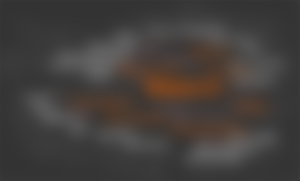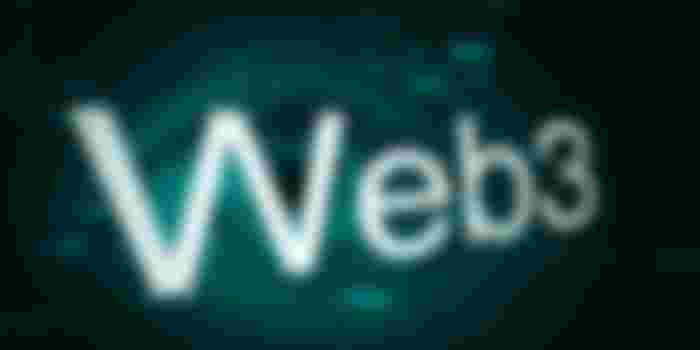What are the different iterations of the Web?

Hello everyone!
For a few months now, if not a few years, we have been seeing a lot of new words appear in the language of the "Crypto Sphere".
One of these words that we are particularly interested in is "Web3".
What does this word refer to? If we talk about 'Web3' does that mean that there is also a 'Web2' and a 'Web1'?
Before we start, it is necessary to be familiar with how these iterations of the Web are written. Because yes, we also use the word 'Iteration', in the example "The third iteration of the Web".
Web 1.0
Web 2.0
Web3 (why not Web 3.0? I couldn't tell you)
To understand what these 3 iterations of the Web are, it is essential to first make the difference between "Internet" and "Web".
Very often we use these 2 words, without really understanding the difference, or use the first one to replace the other, and vice versa.
We may not know it, but the concept of the Internet is relatively old. In the early 1960s, the idea of a Computer Network that would allow users of different computers to communicate was born.
In the following years, the scientific community, especially American, British and French scientists, worked on developing the practical application of this technology.
Initially called the "Network of Networks", it is now called the "Internet".
In 1991, 30 years after the idea of working on a global network of computers, British scientist Tim Berners-Lee publicly announced the creation of the "World Wide Web", more commonly known as the "WWW" and which we still use today. At the time, there were 1,000,000 interconnected computers.

In concrete terms, what are the differences between the Internet and the Web?
Internet
The Internet is a worldwide network of computers, allowing the exchange of data packets. This "network of networks" is made up of millions of networks, both public and private (university, commercial, governmental, etc.) without centralized services.
When you do a search on a web page, you (basically) go to a browser, type in your search, a list of results appears, and you click on the one that interests you. The path to the chosen web site is not direct, you will go through different networks (computers) to reach your destination. If one of these networks is down, your computer will look for a new way to access the web page.
To put it more simply: You are in the middle of a city, you get a letter asking you to go to a specific address. With your city map, you look for the fastest or easiest route to your destination. On one of the chosen routes there is an accident, so it is impossible to get through, so you take an alternative route to reach the indicated place. The same applies if all the access routes are blocked, so you have to try again later.
So we can say that the Internet is the 'Path' that allows you to reach the 'Destination', a place that we can define as the Web
Web
The Web includes all content pages. Web Sites. All these sites are only accessible on the Internet.
Let's go back to the 3 iterations of the Web.

Web 1.0:
The very beginnings of the Web, although the name 'Web 1.0' came late (in 1999), since the early 1990s we have seen the very first Web Sites appear on the Internet.
They were static at the time, and linked to each other by Hypertext links. These Websites were created by Web professionals and were intended for individuals.
When we talk about static websites, it means that they were read-only. The reader could not interact with the content, make changes to it, or comment on it. Just as publishing content or creating websites was reserved for web professionals.
For the youngest among us, it is inconceivable that such sites could have existed, and for the not so young, we still remember these often 'under construction' websites, whose interfaces were relatively sober.
For a moment of nostalgia for some, or to discover the dinosaurs of the Web for others, I invite you to go to the WayBack Machine site: web.archive.org, which lists all the archives of the net since the mid-1990s, where you can see how static sites looked before the advent of Web 2.0.

Web 2.0:
Which we can date back to the late 1990s. By the mid-2000s, almost all websites had made the transition to a more interactive Internet.
Users could start interacting with websites. This allowed the transition from a Static Web to a much more Dynamic Web.
This Web 2.0 is more commonly called 'Social Web' because it is at this period that Blogs, Social Networks, collaborative sites, sharing of Photos, Videos... were created and popularized.
It finally became possible to create, edit, publish content on the internet and comment on content already posted:
Anyone can upload a video on Youtube
Anyone can share music on SoundCloud
Anyone can share/post photos and messages on Facebook, Instagram, Flickr ...
Anyone can create a Blog with WordPress
etc ...

Web3:
For a few years now, the word 'Web3' has been around. According to some, it is the next big evolution of the Web. This word is for the first time used in a Blog in January 2006 by J. Zeldman, then in a New York Times article in November 2006 by J. Markoff.
It is in 2014 that Web3 reappears thanks to Gavin Wood, co-founder of Ethereum, G. Wood is also at the origin of the Polkadot project and is the director of the Web3 Foundation.
To date, no definition has been established as to what Web3, the new iteration of this technology, is.
All we know for sure is that it will be much more focused on decentralization, with many people talking about a "Decentralized Web", using recently developed technologies:
Blockchain
Peer-to-peer exchange
Internet-of-Things (IoT)
Artificial intelligence (AI)
Cryptocurrencies
Open-source software
Virtual reality
Metaverses
Etc ...
This Web3 comes close to the idea of the Semantic Web imagined and dreamed by Tim Berners-Lee in 1999:
"I have a dream for the Web [where computers] become able to parse all the data on the Web - the content, links and transactions between people and computers. A "semantic Web", which would make this possible, has yet to emerge, but when it does, the day-to-day mechanics of commerce, bureaucracy and our daily lives will be managed by machines talking to machines."
Extract from his book "Weaving the Web" published in 1999
Thank you all for taking the time to read this article, if you have any questions feel free to ask me.
Feel free to check out the WayBack Machine Website, and do your own research. The world of the internet and the web is so vast and fascinating, we learn about it every day.
Image sources : Google
Christophe WILHELM




